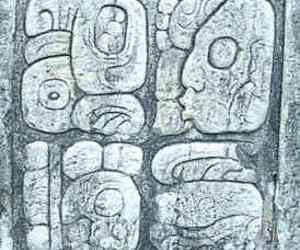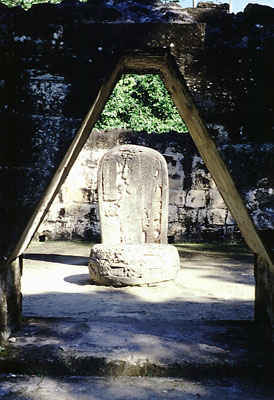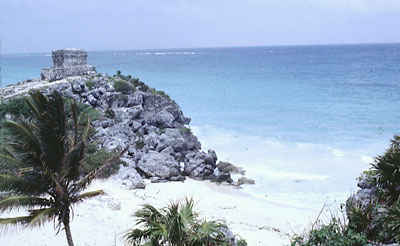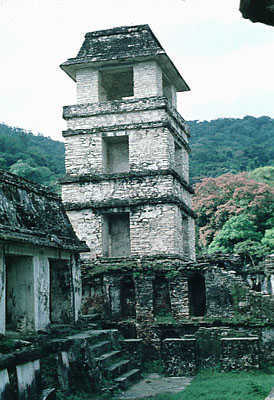
Will the world really end in 2012? Is the ancient Maya prophecy true? What exactly is supposed to occur on December 21, 2012? Does the Maya calendar really predict a cataclysmic event on that date?
People are talking about it, books have been written about it, and some folks — believing it — have contemplated taking drastic measures with their own lives and families. However, even the purveyors of the hysteria are not in agreement on what it entails. Is it the end of the world, the end of life on earth, or “just” the end of human civilization or “widespread catastrophe”?
2012 Cataclysm?
Various sorts of catastrophic scenarios have been predicted.
It’s been predicted that our planet will collide with — take your pick — an asteroid, the planet Nibiru, Planet X, or a black hole. Other scenarios include a geomagnetic reversal or alien invasion, cosmic radiation killing everybody on earth or a solar flare burning up the earth.
Since 2007, NASA (the National Aeronautics and Space Administration) has received thousands of 2012-related questions on its website. Amazingly, inquirers have asked NASA if they should kill themselves, their children or their pets. There’s been an increase of the sale of underground blast shelters in the U.S. So lots of people have been taking this prophecy seriously.
Hollywood produced a big budget flick capitalizing on the hysteria, ingeniously entitled “2012.” I saw the movie but, frankly, it was so forgettable I’ve forgotten most of it. I do remember a gigantic tidal wave crashing across the Himalayas, but that’s about it.
The 2012 phenomenon was even the subject of a General Motors commercial broadcast during the 2012 Super Bowl. This commercial portrayed a post-apocalyptic world in which Chevy Silverados and their drivers survived, but the driver of a Ford did not. How convenient for GM! Ford actually tried to prevent the commercial’s airing.
Where will you be safe?
That’s hard to say.

The 2012 phenomenon spans continents. In Brazil, for example, a colony for survivors has been constructed.
An international poll conducted by Ipsos surveyed more than 16,000 people in over 20 countries, and 10 percent of those polled bought into the Maya calendar 2012 end of the world scenario.
In the Pyrenees of southern France, the village of Bugarach (population 189) is being invaded by outsiders who believe there are aliens inside the local Pic de Bugarach mountain. They regard the mountain as a refuge on the day of catastrophe, when said aliens will whisk them away to safety in their spaceship. It’s predicted that 100,000 people may descend on the village in December. Understandably, Bugarach’s mayor is concerned and says he may call the French Army for assistance.
Others take a different tack. Rather than predict catastrophe, they foretell that the date will usher in a new “cosmic consciousness,” “a change in the nature of consciousness,” “global harmony” or a “true balance between Divine Feminine and Masculine.” Such scenarios sound rather vague, making it easy to backpedal if things don’t turn out as expected.
These ideas have been floating around since the 1960s, and gained intensity over the years. There has been some disagreement on the proposed date, but the majority viewpoint currently places the end of the world on December 21, 2012, so we can expect to hear plenty more during this year.
Can we cut through all the hysteria and see what’s really going on?
The Maya calendar
First one must understand who the Maya were and are.

The Maya were (and are) a culture dwelling in the tropical region of what is now eastern Mexico and western Central America. In pre-Hispanic times, this culture constructed an impressive network of cities, roads and ceremonial centers, which tourists visit today. Archaeological sites include Chichen Itza and Coba in Mexico, Lamanai in Belize, Tikal in Guatemala, Copan in Honduras, and many others.
The Maya were especially proficient in astronomy and mathematics. Their pyramid in Chichen Itza was constructed so precisely that, on the equinox — the first day of spring and the first day of fall — the outline of a serpent, formed by shadow and light, is seen descending the pyramid.
As for the Maya calendar, there were actually several, utilized simultaneously for distinct purposes, and possibly calculated differently in different Maya city-states. The haab was a solar calendar of 365 days, pretty much like ours, albeit without a leap year.
The tzolkin was a religious calendar of 260 days. It is still utilized in some Maya areas of Guatemala.
Every 52 years, the haab and tzolkin calendars coincided, beginning on the same day. This was the occasion for a great New Fire festival.
To measure larger periods of time, the Maya utilized the Long Count calendar. The Long Count was abandoned before the Spanish Conquest, thus all our knowledge of it derives from its rediscovery by archaeologists and scholars in more recent times.
In the Long Count, a period of 144,000 days, or 394.3 years was known as a b’ak’tun.
The Maya believed that the first b’ak’tun of this present age began on the date of the creation of this present world, the fourth world according to Maya mythology. That date, if converted to our Gregorian calendar, would have been August 11, 3114 B.C.
If the Maya calendar had been followed consistently ever since pre-Hispanic times, we would now be in B’ak’tun Number 13. This b’ak’tun began on September 18, 1618, and it ends on December 21, 2012. That final date is what people are talking about.
To mentally visualize 394.3 years, the time span of a b’ak’tun, it’s helpful to see that B’ak’tun 13 corresponds pretty closely to American history. It begins in 1618, about the time that Virginia and Massachusetts — the first English colonies, which became the U.S.A. — were founded on the eastern seaboard. Thus, American history up to now has been about one b’ak’tun.
(Careful now, readers. I’m not asserting that the U.S.A. is a result of Maya prophecy. I just use it to give an idea of the time span of one b’ak’tun!)
Despite all the hoopla, the significance of December 21, 2012 is not that it’s the end of the world, but that it’s the date the thirteenth b’ak’tun ends.
There is no Maya prophecy of the end of the world on December 21, 2012. Nor is there any uncommon astronomical significance to December 21, 2012. It is a winter solstice, but then, that occurs every year and wasn’t of great significance to the Maya.
What about the archaeological evidence?
There is a pre-Hispanic Maya monument found in Tabasco, Mexico, called Tortuguero Monument 6. The main subject of the inscription on said monument was the dedication of a tomb or shrine, circa 700 A.D.
This inscription, written in characters called glyphs, has been eroded and has a crack in it. It references the date 4 Ajaw 3 k’ank’in at the end of the thirteenth b’ak’tun, which corresponds to December 21, 2012 in our Gregorian Calendar.
Here’s a translation of the Tortuguero Monument 6 inscription:
It will be completed the thirteenth b’ak’tun,
It is 4 Ajaw 3 k’ank’in
and it will happen a “seeing” [?].
It is the display of B’olon-Yokte’
in a great “investiture.”

But possibly, it would be better translated thusly:
The Thirteenth b’ak’tun will end (on)
4 Ajaw, the third of k’ank’in.
[?] will occur.
(It will be) the descent (?) of Bolon-Yokte
to the [?].
Then again, maybe this is the correct translation:
It will have been completed, the Thirteenth b’ak’tun
(on) 4 Ajaw, the third K’ank’in.
It will occur, the witnessing/attending of
Bolon-Yokte´ the Many-Strides?
in the great? (or red? or black?) impersonation [?]
This incomplete text is so obscure that scholars who have studied Maya glyphs for years aren’t sure what it means!
Bolon Yokte is either (a) an obscure mythological figure worshipped by the Maya, or (b) a collective of nine mythological figures worshipped by the Maya. So does the inscription claim that Bolon Yokte descends, is displayed or attended?
It’s been suggested that it describes a ceremony in which a Maya individual impersonates Bolon Yokte in the dedication ceremony back in 700. Other Maya inscriptions have a similar format — the mention of a future date, then a return to the date of the actual inscription. It’s not prophecy, but the use of long distance dates to accentuate a current one.
Besides the Tortuguero inscription, there is another Maya inscription which may refer to the date, inscribed on a brick at Comalcalco, also in the state of Tabasco. This site is the only one in which the Maya built with brick.
The date on the Comalcalco Brick is not even in the Long Count — it uses the haab and tzolkin. It could possibly refer to December 21, 2012, but it might refer to other dates in the past. For one thing, the brick inscription has no future tense marker.
Once again, it’s not much to build a theory on.
In 2012, an inscription was discovered in Guatemala at La Corona, and it mentions the 2012 date. It references the visit of the allied ruler of Calakmul (now in the Mexican state of Campeche) to the site on January 29, 969 A.D. See how precise the dates are! The reference to December 21, 2012, is not a prophecy, but a projection of a future date included with the current date.
Palenque and doomsday
So, are there any Maya inscriptions projecting dates after December 21, 2012, indicating that the Maya did not believe that was the end of the world?
The Temple of the Inscriptions in Palenque, Chiapas, is the burial-place of the ruler Pacal the Great (603-683). Inscribed on that pyramid is the longest known intact Maya inscription, mostly dealing with the history of the Palenque city-state.
The inscription links Pacal the Great’s coronation date in 615 A.D. to future dates, including one corresponding in our calendar to 4772 A.D. That’s way beyond December 21, 2012! Why would they make that projection if they thought the world would end in 2012?
One of the arguments used by proponents of the 2012 doomsday hysteria is that the calendar would have to terminate at the end of the thirteenth b’ak’tun because, according to Maya mythology, the previous world ended after thirteen b’ak’tuns. However, there’s no indication they believed that every world has to exist for the same length of time.
The Palenque inscription represents a piktun (an even larger unit of time) composed of 20 b’ak’tuns, indicating that a piktun was not limited to 13 b’ak’tuns.
Other archeological sites
At Tikal, Guatemala, there is a piktun of 19 b’ak’tuns.
A recent discovery at Guatemala’s Xultun site is relevant. It’s a room dating to about 813 A.D. that appears to be a sort of calendar workshop. It contains a calendar with 17 b’ak’tuns.
So a piktun was of variable length, not necessarily limited to 13 b’ak’tuns.
For what it’s worth, a stela at Coba in the Mexican state of Quintana Roo has an extremely enormous number (41 octillion)projected. However, it’s not clear whether that’s a projection into the past or the future. It does indicate, though, that the Maya were comfortable with such large numbers.
What do the scholars say?
So if the 2012 prophecy is a lot of baloney, who is promoting it?
For the most part, it’s neither professional scholars of the Maya culture nor present-day Maya people. The impetus mostly comes from Western “New Age” writers.
Consider the example of Apolinario Chile Pixtun, a Maya elder from Guatemala. This Maya gentleman traveled to England and, after returning, reported that “I came back from England last year and, man, they had me fed up with this stuff.”
Here are some quotes from professional scholars in the field:
Sandra Noble of FAMSI (Foundation for the Advancement of Mesoamerican Studies, Inc.): “The 2012 phenomenon is a complete fabrication and a chance for a lot of people to cash in.”
Mark van Stone of FAMSI :”There is nothing in the Maya or Aztec or ancient Mesoamerican prophecy to suggest that they prophesied a sudden or major change of any sort in 2012.”
Susan Milbrath, curator of Latin American Art and Archaeology at Florida Museum of Natural History : “We have no record or knowledge that [the Maya] would think the world would come to an end” in 2012.
Susan Gillespie, University of Florida anthropologist, attributes the 2012 hysteria to “media and from other people making use of the Maya past to fulfill agendas that are really their own.”
David Stuart (University of Texas) calls it “complete nonsense” and says it’s promoted by “gurus and spiritualists who wouldn’t know a Maya glyph if one hit them on the nose.”
Indeed, there is a major religious contradiction at the heart of the whole 2012 hysteria.
The vast majority of those who buy into the “2012 Maya Prophecy” are not systematic followers of the pre-Hispanic Maya religion. They don’t worship Maya mythological figures or practice Maya religious rituals, such as bloodletting, for example. They may not even know much about the Maya.
The use of the supposed prophecy is mostly a syncretistic cafeteria-style “New Age” gimmick.
The Christian religion has its own well-defined belief in the end of the world. It’s brought about by the return of Jesus Christ, who told his followers that “…of that day and hour knoweth no man.” According to the words of Christ, a believer shouldn’t forecast an exact date for Christ’s return. There have been individuals throughout history who’ve made such predictions, all of whom were embarrassed by failure.
It appears that “New Age” proponents of the 2012 Maya calendar hysteria have combined elements from the Christian end-of-the-world doctrine with elements from the pre-Hispanic Maya culture, with a few other ideas thrown in. The result is a scenario that is neither orthodox Christian, nor traditional Maya, nor in accordance with the archaeological evidence. It is, however, very lucrative for its promoters!
The 2012 Maya calendar hysteria distorts Maya culture to promote a syncretistic “New Age” agenda. It detracts from a serious study of the Maya culture and its achievements.
For those who are interested, there is plenty of material available on the Maya, while new discoveries continue to be made. And for tourists, there are plenty of archaeological sites that can be visited.
The Maya culture was — and is — unique and worthy of study. It can and should be appreciated for its own attributes, rather than interpreted through the lens of the contemporary “Maya prophecy” fad.

